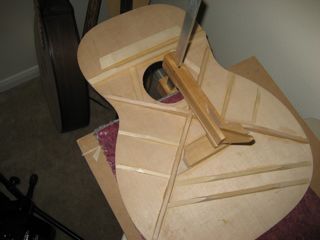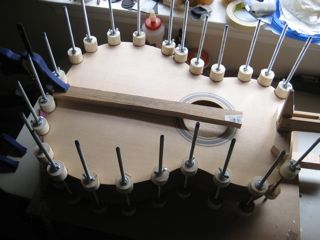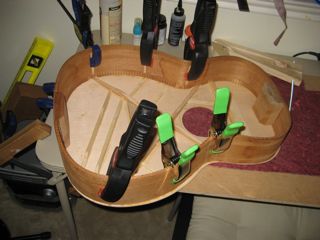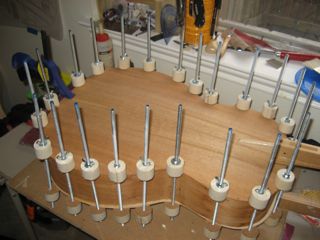very few creative acts “just happen.” works of art are the culmination of everything that an artist has done. even in what would appear to be complete chaos, an artist’s entire process of becoming is present in a piece of work. in a very real sense, each piece is a snapshot of artistic development. that means that every creative effort is the current endpoint for an artist and the stepping stone to the next. with that in mind, i believe in getting it done.
somewhere on the intarwebz i came across the manifesto of the cult of done. these are the thoughts put down by a couple of guys who understand that each piece of work is part of a greater process. i liked the idea so much that i printed it up and hung it on my studio wall. it fits perfectly with my weekly sketch routine.
the reason that i do a sketch a week is to enforce personal discipline and development. many of the tunes i produce will end where they are and that’s fine because they lead to what is next. the act of recording and mixing a new song each week forces me to look at how i create, the tools that i use, and the kind of attention each piece demands. it also feeds what is to come. so while a given sketch may not be what i would consider a polished final product it is no less valuable for the role it plays in getting me to that next step.
my thesis is this: no one improves without many iterations. fish didn’t just jump out of the ocean and start picking apples. it took a while. creative work is the same way. brilliant pieces like “petrushka” didn’t spring fully formed from stravinsky’s head. it took him years of experimentation and hard work to develop the techniques necessary to produce such a thing of beauty. though a composer may only have a handful of pieces that are recognized as a part of the oeuvre, there are probably piles and piles of manuscripts that never saw the light of day. experiments. exercises. call them what you will, but for every truly great piece of music there are probably dozens of things that were, at best, scribbles on paper.
maybe that’s one of the better things about the time we’re living through: it’s pretty inexpensive to be prolific. well, for some disciplines anyway. a few gig of space here and there that can be recycled when it’s all over is pretty nifty. the immediate feedback of being able to commit a performance to the computer and hear it instantly is nice too. add a blog or some file space on the internet and there’s no good reason not to produce as much as you can (or want).
this is not to say that everything should be rushed. far from it. composing a major work can take years. it shouldn’t be pushed at an overly aggressive pace. at the same time, maybe it shouldn’t be the only thing that is in production. i like to keep several things in the air so that when i’m stuck on one i can move to another. it keeps the routine of creativity in tact without forcing bad decisions on a piece. of course if we stick with the “cult of done” model and recognize that everything is a draft, it’s a different ballgame.
and i’m not so sure about that.
in my personal creative process i never know what’s going to take off. i seldom sit down and say “i am going to write something that goes dah-dee blah boop-boop…” instead, i start noodling around. i sketch. play things over and over. create variations. invert ideas. switch up instruments. process things until they are unrecognizable. at no point in this series of experiments do i know when “it” is going to hit. or even if it will hit at all. while that’s certainly part of the fun, it’s not always very satisfying. it’s that feeling that someone at a slot machine gets…it hit once, it has to hit again! and indeed, if i pull the lever enough times, something will turn up. i keep sketching until it does.
so about sketches. they’re great. the more one does, the better the chances are for technical improvement and the more opportunities there are for powerful inspiration to worm its way into the work. once that tiny germ shows up, things can explode. in a very real way, this idea of producing as much as you can and really getting it done creates a deeper pool in which great ideas can grow.
take the project and get it done. “done is the engine of more.”




